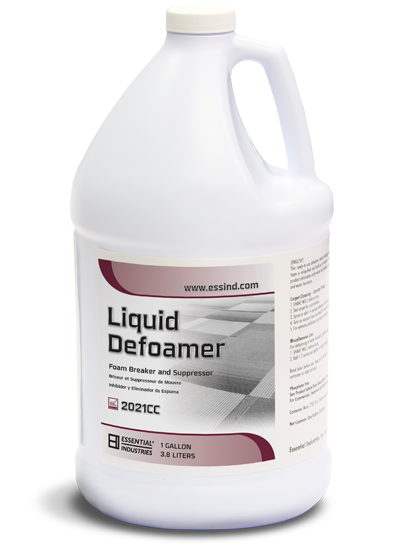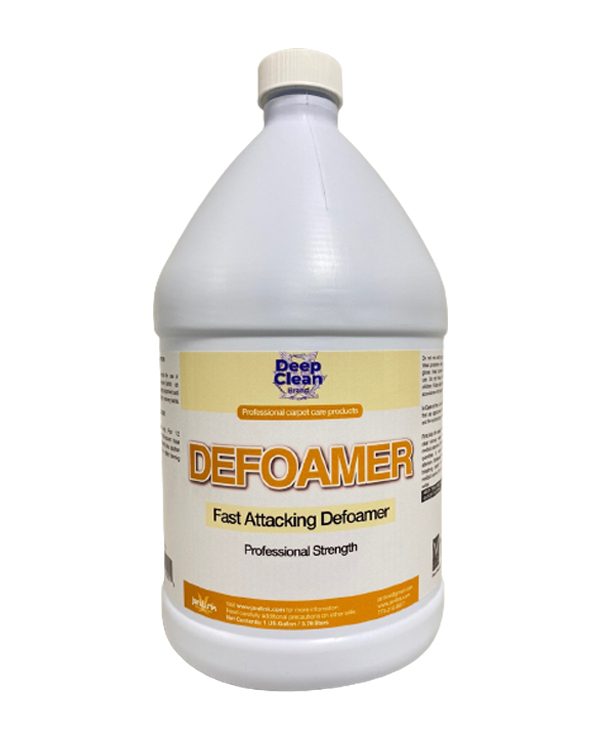Discovering the Benefits of a Chemical Defoamer in Manufacturing and Production
The combination of chemical defoamers in production and production processes supplies a strategic benefit by attending to one of the relentless difficulties in commercial operations: foam control. As makers make every effort to optimize processes and improve customer contentment, the role of chemical defoamers becomes increasingly important.
Value of Foam Control
While the existence of foam in producing procedures can in some cases seem harmless, effective foam control is important for enhancing functional efficiency and product high quality. Foam can interfere with different stages of production, resulting in inefficiencies that might raise prices and expand processing times. In markets such as food and beverage, drugs, and chemicals, unchecked foam can block devices, interrupt automated systems, and eventually result in product inconsistencies.

Applying effective foam control techniques not just improves performance however additionally supports governing conformity in industries where foam can result in ecological concerns. By utilizing chemical defoamers, producers can minimize these obstacles, guaranteeing smoother procedures and higher-quality end items. Ultimately, focusing on foam control is a vital aspect of manufacturing that can generate substantial benefits in terms of item, performance, and safety and security integrity.
Kinds Of Chemical Defoamers
What sorts of chemical defoamers are readily available for producing processes, and exactly how do they vary in application? Chemical defoamers can be classified into three main kinds: silicone-based, natural, and inorganic defoamers. - Chemical Defoamer

Organic defoamers, typically originated from fatty acids or natural oils, work in a series of applications, consisting of food and beverage production. They are commonly preferred for their lower poisoning and environmental effect, making certain compliance with industry guidelines.

Each kind of defoamer serves distinctive functions based on the chemical structure and the specific needs of the production process, permitting makers to choose one of the most suitable alternative for their certain requirements.

Benefits in Production Effectiveness
Chemical defoamers play an essential duty in enhancing producing effectiveness by efficiently managing foam generation throughout various procedures. Foam can prevent manufacturing rates, disrupt equipment procedure, and bring about costly downtime. By incorporating chemical defoamers, read here makers can minimize these concerns, making sure smoother operations and enhanced general efficiency.
Making use of chemical defoamers aids maximize the operational performance of tools such as pumps, activators, and mixers. With decreased foam, these devices can operate at their planned ability, lessening the danger of overflow and enabling constant handling. This leads to better source utilization and higher throughput.
Additionally, chemical defoamers facilitate faster processing times by decreasing the moment required for foam removal. This velocity can substantially influence production routines, permitting producers to satisfy client demand extra efficiently. In addition, the use of defoamers adds to reduce energy consumption, as equipment runs much more successfully with reduced foam disturbance.
Effect on Product Top Quality
Foam control is not just essential for preserving effectiveness in producing procedures but also plays a significant duty in guaranteeing product high quality. Excessive foam can present air right into solutions, resulting in disparities in the final product. This can manifest as defects such as gaps, uneven textures, or subpar finishes, which undermine the desired top quality and efficiency of the product.
Additionally, foam can hinder the homogeneity of combinations, leading to unequal distribution of active components. In markets such as finishings, cosmetics, and food production, this can bring about variants in color, taste, and general performance. By utilizing a chemical defoamer, suppliers can minimize these dangers, making sure that items satisfy rigid top quality specifications.
Furthermore, controlling foam can improve the stability of solutions and suspensions, which is vital for ensuring shelf-life and customer complete satisfaction. With boosted item uniformity and decreased flaws, makers can accomplish higher criteria of quality control, eventually leading to enhanced customer depend on and brand name loyalty.
Cost-Effectiveness and ROI
Efficient foam control not only improves item quality but likewise adds significantly to the overall cost-effectiveness of making processes. The usage of chemical defoamers lessens foam-related issues, which can or else cause manufacturing hold-ups, equipment malfunctions, and raised power intake. By reducing foam, manufacturers can optimize their processes, resulting in greater throughput and performance.
Purchasing chemical defoamers can generate a significant roi (ROI) The preliminary expenses linked with these additives are typically offset by the cost savings realized from reduced downtime and boosted material return. Moreover, enhanced item top quality he has a good point can reduce waste and revamp prices, further reinforcing monetary efficiency.
Furthermore, effective foam control can result in minimized water and power use, adding to reduced functional expenses. This is especially crucial in markets where resource efficiency is critical. By incorporating chemical defoamers right into their procedures, manufacturers can achieve lasting savings while maintaining competitive pricing in the marketplace.
Conclusion
In final thought, the integration of chemical defoamers in manufacturing and manufacturing processes is necessary for optimizing functional performance and improving product quality. The benefits used by chemical defoamers not only sustain regulatory conformity however also supply an affordable edge in the production landscape.
The combination of chemical defoamers in manufacturing and production processes supplies a tactical benefit by attending to one of the consistent obstacles in industrial procedures: foam control.While the existence of foam in making processes can sometimes seem safe, reliable foam control is crucial for optimizing functional efficiency and item top quality.Chemical defoamers play an important duty in improving manufacturing effectiveness by effectively regulating foam generation during different procedures.Moreover, chemical defoamers more information facilitate faster handling times by reducing the time needed for foam removal. In addition, the usage of defoamers contributes to reduce power consumption, as machinery runs more successfully with decreased foam disturbance.